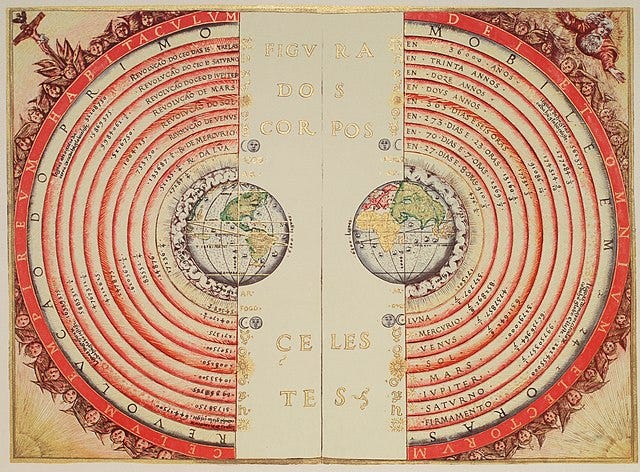This is a tangent of the series Quid ex Machina, which examines the deep, under-explored, and Unseen impact of AI on humans and our societies. See here for the rest of the series.
Today’s theme song is I’m Coming Back, by The Human League.
First, a confession: the long essay I had intended for this issue, is still not up to my standard. After several weeks of writing and revising, I keep having trouble with its structure and delivery. And you already know I loathe to send any lesser thing to your inbox.
So here’s a Tangent issue: a detour from the main route, but is still relevant and connected, and will lead back to the major road in due time.
There’s another reason I hesitate to publish. The long essay is set to provoke and challenge, not to divide; but with the topic at hand, it can be read as divisive. So I want to do my best to retain the power to challenge and provole, and remove the potential to divide.
Try as I may, Marcel Proust’s spell hovers over my head: a book is written by its readers. From any written work, different readers will take away different elements, and react in different ways.
In this sense, publishing is like stocking a kitchen, and the moment after I put in all the raw ingredients, I’m gone from the scene. Then y’all come in as chefs, and freely use anything in the kitchen to cook a meal as you please. No two chefs cook alike even from the same recipe, so whether the dish is a Julia Childs family plate or a Gordon Ramsey beef roast, is entirely up to you.

I hope that I can stock the kitchen full and varied, so you can cook the dish you want. I’d be remiss if I only put in either all red meat or all green vegetables.
With the confession out of the way, let’s open a map, and see where this tangent goes.
If you didn’t have a physical map, and instead, opened Google Maps or Apple, you’d see the map’s default position is always centered on you and your current location. You – according to the maps software – are the center of the world. And not only you, but each and every one of us as well. When we open our maps app, we automatically become the focus of attention for the maps software; we are the center of the world.
This is a very strange phenomenon. For one, it diverges from physical reality: only the maps software puts us front and center in their calculation, but by other practical means – be it geography, astronomy, or social relations – we are not the center of everything. The proverb is right: not everything is about us.
It is also very old-school – by that I mean earlier than the 1650s. Before Copernicus came up with the heliocentric model, people had always assumed that the earth was the center of the universe. One reason that medieval scholars pushed back against Copernicus’ model and Galileo’s defense, was that the heliocentric model displaced humans and the earth (especially the Church) from the focal point of nature’s attention and God’s grace, while the central position was an evidence of legitimacy for both the Church and human society. Losing the center, the medieval scholars contended, was equal to losing legitimacy and relevance.

I concede: the medieval scholars had a point about places on maps. We represent our world in physical and metaphorical maps, and use them to understand and navigate our environments. In other words, we relate to the world through different maps, so the question “what things are at which places on the maps, and what do they mean?” matters a great deal. Naturally, we’d give more attention to what’s at the center, and assume it is the most important and has the most authority — for example, the Church in medieval times.
Now, again, we returned to the center of the map, this time riding on the back of computers, smartphones, and software, more than 400 years after Copernicus devised a model that removed earth from the universal focal point. The technology that we use to map our world, now puts every one of us at the zoomed-in central spot of the map. What’s more, this time we let the technology stay with us at the center, and share all the attention and spotlight with it.
I’m curious to find out how this map, a map on which we have drifted to different places in the past 400 years, will change how we related to and experience our world in the future – maybe the next 400 years.
Thank you for reading Earthly Fortunes! Like it? Please share it! 😄 Subscribe for more earthly fortunes: time, geography, music, medieval farming, and the Unseen of AI.
Let me know in the comments, DM me on Twitter or Instagram, or just reply to the email!




I'm glad you gave yourself more time on your long piece if you feel like you need it, but now I am extra interested in this spicy new essay!
I never thought of this, Helen. Thanks for making me notice it. It is indeed interesting that now each and every one of us appears as the center of OUR universe in maps. “Our” here is critical, as each of us has a different universe they relate to. In a way, this is a horizontal multiverse driven by the uniqueness of every human. The fact that Google Maps superimposes the geographical dimension over it enriches this idea with one more layer. I don’t know, I’m just rumbling in real time here. Nothing too thought out. But this is a very interesting concept. Not even Copernico, though, got it right, imho. The sun is definitely not the center of the universe lol. But, hey, I’m not really as versed as you are in this whole domain. :)